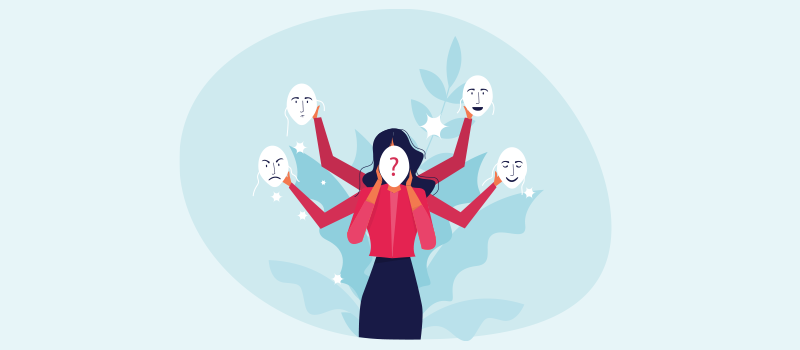What’s the Buzz
The Bee Healthy Blog
Borderline Personality Disorder vs Bipolar: What’s the Difference?

Everyone experiences mood changes from time to time. It’s a normal reaction to stressful life events and situations. However, some people experience extreme shifts in mood which may be due to a mental illness.
Two disorders characterized by major mood shifts are borderline personality disorder and bipolar disorder. While the two are partially similar and have some similar symptoms, there are some key differences between them. They are listed as separate conditions in the Diagnostic and Statistical Manual of Mental Disorders.
Please continue reading to learn more about these two mental disorders.
What is borderline personality disorder (BPD)?
Borderline personality disorder is a mental health condition in which there are extreme shifts in mood and an inability to manage emotions in a healthy manner. This emotional dysregulation affects how a person feels and can impact everyday life.
People with borderline personality disorder have trouble controlling their thoughts and emotions. They experience intense emotional reactions, ranging from depression to euphoria, with predominantly negative emotions. Trigger events often precipitate mood swings, and the response is disproportionate to what a normal person might experience.
For example, a normal person might feel blue for a few days after a breakup with a romantic partner but will ultimately take it in their stride and move on. A person with personality disorders, on the other hand, might respond to this trigger event with self-destructive behavior like substance abuse and impulsive behavior like sexual promiscuity or self-harm behaviors.
What is bipolar disorder?
Bipolar disorder (earlier called manic depression) is a mental health condition characterized by extreme mood swings ranging from emotional highs (mania) to emotional lows (depression). There can be periods of stable mood between a manic or depressive episode.
When they are in a depressed state, people with bipolar disorder experience dejection, sadness, hopelessness, and a loss of interest in normally enjoyable activities.
On the other hand, they experience manic symptoms like euphoria, high energy, jumpiness, racing thoughts, talkativeness, or intense anger when their mood shifts to an elevated mood during a manic episode. Severe mania can lead to socially inappropriate behaviors such as disrobing in public.
There are different types of bipolar. Bipolar disorder is characterized by depressive episodes and manic episodes that can continue for days with a negative impact on sleep patterns, activity, energy, behavior, and judgment.
Bipolar II disorder is characterized by hypomanic and depressive episodes (hypomania is less severe than mania), but there is an absence of manic episodes.
Why do some people develop mental health conditions like bipolar disorder and borderline personality disorder?
The exact cause of mental health conditions like borderline personality disorder and bipolar disorder is unclear. Research suggests it is a combined effect of changes in brain structure and function, genetics, and environmental factors. Approximately 80-90% of people with bipolar disorder have a family history of this condition.
What is the treatment for borderline personality disorder?
No specific medication is available to people diagnosed with borderline personality disorder. However, doctors may prescribe medicines to help with specific symptoms such as severe depression or anxiety.
Psychotherapies like dialectical behavioral therapy (DBT) are an effective way to treat BPD. People with a mood disorder like BPD lack the skills to manage intense emotions and thoughts. Dialectical behavior therapy can help them learn these skills.
Another effective treatment is mentalization-based therapy, in which a person learns to become aware of their mental state and relationships with others.
Transference-focused psychotherapy has been developed primarily to help people with borderline personality disorder. It helps people with this disorder identify self-destructive patterns and ideas and develop a positive self-regard and constructive behaviors.
Electroconvulsive therapy is sometimes used to treat severe depressive episodes and suicidal thoughts in BPD patients.
What is bipolar disorder treatment?
Doctors usually treat bipolar symptoms with mood stabilizers like lithium. Other medications may be used to treat depressive symptoms and mood instability. According to the American Psychiatric Association, medications are the mainstay of bipolar treatment.
Psychotherapy modalities like cognitive behavioral therapy and counseling can also be useful. They can help people with bipolar symptoms manage the complications and chaotic relationships that often arise as a result of the disorder. Group therapy can help in managing a depressive episode.
Closing Thoughts: Getting Treatment for Mental Illness
The mood swings associated with mental illnesses and mood disorders like bipolar and borderline personality disorder can be very difficult to manage. However, these two disorders are treatable. To ensure you or a loved one gets the proper treatment, always obtain professional medical advice from mental health professionals.
References:

SOCIAL